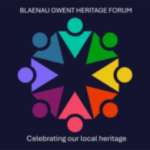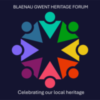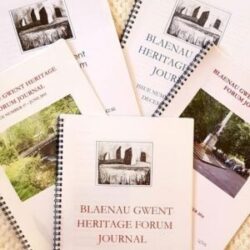We produce and publish our journals so that knowledge of our rich local heritage is recorded and shared as widely and accessibly, as possible.
Our Journal

Current Journal – Issue 26
Journal 26 offers a range of topics from covering events during the 19th and 20th centuries. We are fortunate to be able to include new work offered for our publication by Mr Martyn Thomas, a Ph.D. Candidate, now relocated to Hay, as well as a personal journal from WWI which has not been published before. A strange case of ‘murder’ as well as a complete chapel history and ‘pub crawl’ can all be found in this journal.
Page 7: Rodger Burchell – An unusual verdict. The strange case of “Felo De Se” in Beaufort
Page 17: Contributed by Mr Phillip Prosser – A Globetrotter in Tredegar.
Page 19: Martyn Thomas – Interwar Relief Work in The Ebbw Fach Valley.
Page 29: John B. Hilling – Early ‘New Towns’ in the Valleys.
Page 36: Rodger Burchell and Janet Karn – A First World War Journey,The Journal of Corporal Henry Vicks.
Page 56: Robert Short – A History of Tabernacle Baptist Church Tredegar
Page 69: Biographical Notes
Page 70: Information for Contributors
Brought up in Ebbw Vale Rodger spent much of his life working at Ebbw Vale steel works. Afterr this he worked as a lecturer in Archaeological fieldwork and Practice, spent 5 years as a geophysical specialist for SiteScan Archaeological, as a field archaeologist for Glamorgan Gwent Archaeological Trust, (GGAT), Church & Site Archaeology and CADW among others.He is an active member of several history and archaeology societies and is a practitioner of the ‘Chartered Institute for Archaeology’. His studies included Welsh History and its sources, manuscripts, maps, etc, Archaeology, Industrial Archaeology, Local History, Landscape History and Archaeology. His MA (Wales) focussed on the history of Milling in Gwent and he has written several ‘historic’ walks for the surrounding area.
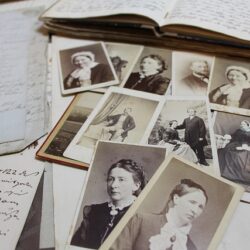
Contributions for our next Journal
Do you have a story to tell or interesting information you would like to share with us? We invite contributions relating to historic Blaenau Gwent for inclusion in Issue 27.
We are looking for articles from new contributors as well as from more regular ones so please contact us if you have work that you would like to submit.
We ask that all contributors refer to the guidance notes below and can offer help and support if anyone would like this.
Articles and Essays
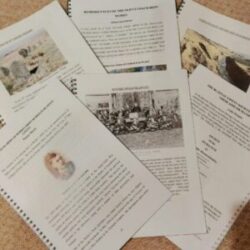
Articles from past Journals
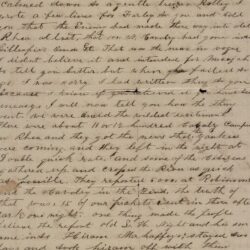
Winning Eisteddfod Essays
A WINNING ESSAY IN THE ABERGAVENNY EISTEDDFOD 1836
Author – Thomas Watkins (Eiddil Ifor)
Author – John Davies (Brychan)
(2 separate items in one package)
A WINNING ESSAY IN THE ABERGAVENNY EISTEDDFOD 1837
Author – Thomas Watkins (Eiddil Ifor)
A WINNING ESSAY IN THE ABERGAVENNY EISTEDDFOD 1838
Author – Daniel Lewis (Ifor Gwent)
BIRTH
Thomas Watkins was born in Pwll-yr-Hyward, Llanfoist, Monmouthshire on May 1st 1801. His father had worked in Abertillery but returned to Llanfoist to work in the limestone quarries belonging to the Blaenafon iron works. The family were members of the Baptist chapel in Llanwenarth.
WORK
Thomas Watkins kept the White Hart tavern in Blaenafon before working as a weigher in the iron works of Blaenau Gwent. After the death of hisd wife in 1859 Thomas returned to Blaenafon to keep the Three Cranes tavern for the remainder of his life.
CYMREIGYDDION Y FENNI
He was an original and leading member, in its early years, of the Abergavenny based group of people, Cymreigyddion y Fenni, who established the series of Eisteddfodau that created such a stir in Gwent between 1833 and 1854.
PRIZE-WINNING ESSAYS
Thomas Watkins was a regular competitor in the Abergavenny Eisteddfodau and won many prizes for his essays, of which this is one. He is best known for his history of Llanfoist parish – Hanes Llanffwyst – which won first prize in the first Abergavenny eisteddfod in November 1834. He was not as successful as a poet but he certainly was as an essayist in these eisteddfodau, winning competions on a dozen occasions. Nine of his essays survive, five in the National Library of Wales, Aberystwyth, and four in Cardiff Central Library.
BIRTH
John Davies was born in 1784 in Llanwrthwl parish, north Breconshire. His family was poor and his father scraped a living as a labourer. Little is known of his early life except that he received very little schooling and at some time he left his isolated rural area for Swansea.
WORK
From Swansea he went to sea for several years, during which time he learned to read and write, self-educating himself in English, Welsh, a wide range of knowledge, and in book-keeping skills that were to give him plenty of employment later in Tredegar. His father had died during his time at sea and in the meantime, his mother and brothers had moved to Tredegar.
At the start of the available diary period John was married to Margaret Morgan and was a bookseller and publisher in the town. He was also a promoter of friendly societies, the Oddfellows in particular, and an office holder in some of them, either as secretary or treasurer.
DIARIES
He was an inveterate diary keeper and some of his diaries have survived. They are written almost wholly in Welsh, and can be read in the Cardiff Central Library. Unfortunately, the surviving diaries do not cover the first twenty five years of his life in the town. Nor are the four volumes which do exist continuous as there are gaps for some years, but they do span from 1831, by which time he was already into middle age, to just before his death in 1864. The diaries amount to over two hundred pages of handwritten entries from a time when Tredegar was very much growing and prospering.
The diaries reveal that he kept the books for savings clubs and several businesses in the town, and earned small amounts by various writing tasks for others. This was a time when the majority of the population were illiterate, yet would have relatives in other parts of Wales that they needed to keep in contact with. In particular, there were significant number of the town’s sons and families who had emigrated to America having learned their industrial skills in Tredegar, and wanting letters from home.
Very little is known about Daniel Lewis. In the definitive work on the Abergavenny Eisteddfodau by Mair Elvet Thomas: Afiaith Yng Ngwent, Hanes Cymdeithas Cymreigyddion y Fenni 1833-1854, 1978, University of Wales Press, she notes: ‘I have not been able to discover any information about Daniel Lewis, Ifor Gwent, except for that fact that he worked in Coalbrookvale Iron Works [ie.Nantyglo], and that he won twice at the Abergavenny Eisteddfodau in 1836 and in 1838.
I have tried to discover more about him but with limited success’. In my reading of other Gwent manuscripts of the same period, such as the diaries of John Davies – Brychan of Tredegar, the several manuscripts by T.E.Watkins, Eiddil Ifor of Llanffwyst, all of which are in Cardiff Library, I have come across a Daniel Lewis and a David Lewis – Ehedydd Gwent, the both from Blaenau Gwent and the implying that they were brothers. If indeed they were, then Daniel Lewis is a son of a former vicar of Llenwenarth and Aberystruth or Blaenau Gwent parish. Thomas E. Watkins, one of the founder members of Cymreigyddion y Fenni and a prolific competitor himself in these Eisteddfodau, refers to a Daniel Lewis of Blaenau Gwent advising and accompanying Archbishop William Coxe when he made his solo tour in Monmouthshire in 1799. Though one cannot be certain from the data currently available, it seems very likely therefore that the author of this history was indeed a local lad from the very parish described in this history.
Colin Morgan
